
Community
Spotlight: Every Dog Has Its Day
New Year, New Digs for the Humane Society of Sarasota County
By Sylvia Whitman
February 2021
When the Humane Society of Sarasota County’s board of directors signed off on the biggest renovation and expansion in the animal shelter’s almost 70-year history, the world had not yet heard of COVID-19. The pandemic interfered with fundraising and delayed construction by a couple of lockdown months. But tails were wagging in January as the nonprofit welcomed sojourning pets and eager adopters into the centerpiece of its rejuvenated facility—a sprawling new complex of cat condos, dog pods, adoption viewing rooms, offices, and spaces for education programs and training courses.
Shelter staff and animal-welfare experts consulted with the architect, so amenities contribute to making animals more adoption-worthy by sustaining their physical and mental health. For dogs, single-occupancy pens feature a cot, toys, and doors to fenced outdoor patios. The cat wing includes a kitten suite and individual cat condos with accessible litter-box cabinets and outdoor ventilation; two cat colony rooms lead into a screened outdoor “catio” that faces a shade garden for felines to contemplate. Simply put, it’s the cat’s meow.
Most animals don’t stay long. In 2019, the Humane Society of Sarasota County (HSSC) took in 1,898 animals—1,410 dogs and 488 cats. Pet-loving Sarasotans adopted the vast majority, with a few transferring to local shelters or rescue groups. HSSC qualifies as a no-kill shelter, which means that although it euthanizes a few very ill or incorrigibly aggressive animals, it achieves a “save rate” greater than 90%. HSSC’s actual save rate in 2019 was 98%. Even in upside-down 2020, with a long hiatus on walk-in adopters, the save rate fell only to 96.6% of 1,484 animals under care.
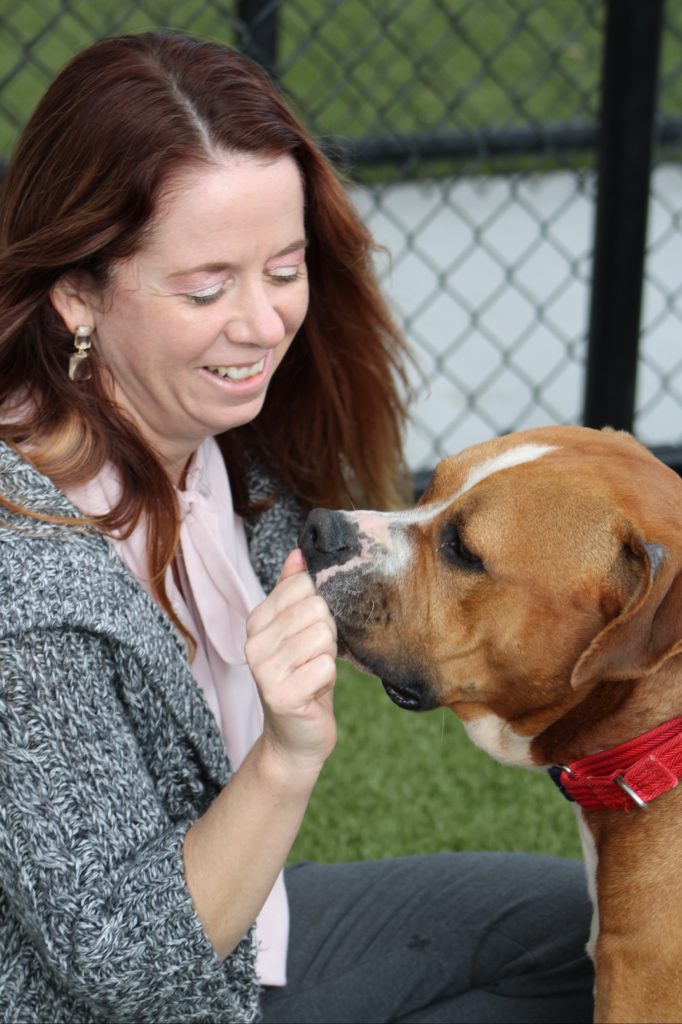
But regionally—and especially across the state and the Southeast—the number of needy animals often outstrips the capacity of local rescue operations, says HSSC’s new executive director, Anna Gonce. The reason? “Southern States have not done a good job with spaying and neutering.” All those litters of kittens and puppies grow up.
“In national rankings of deaths in shelters, Florida is the fourth worst; about 45,000 animals a year die,” Gonce says. Expanded facilities not only let HSSC better serve the immediate community; it supports a broader movement, which aspires for Florida to become a no-kill state.
HSSC’s expansion, now moving into the final phase, with another building demolition and reconstruction underway, should increase the shelter’s capacity by 50%. In 2021, says Gonce, HSSC is aiming to serve 2,700 critters. “We’re their temporary stop on the way to finding a home.”
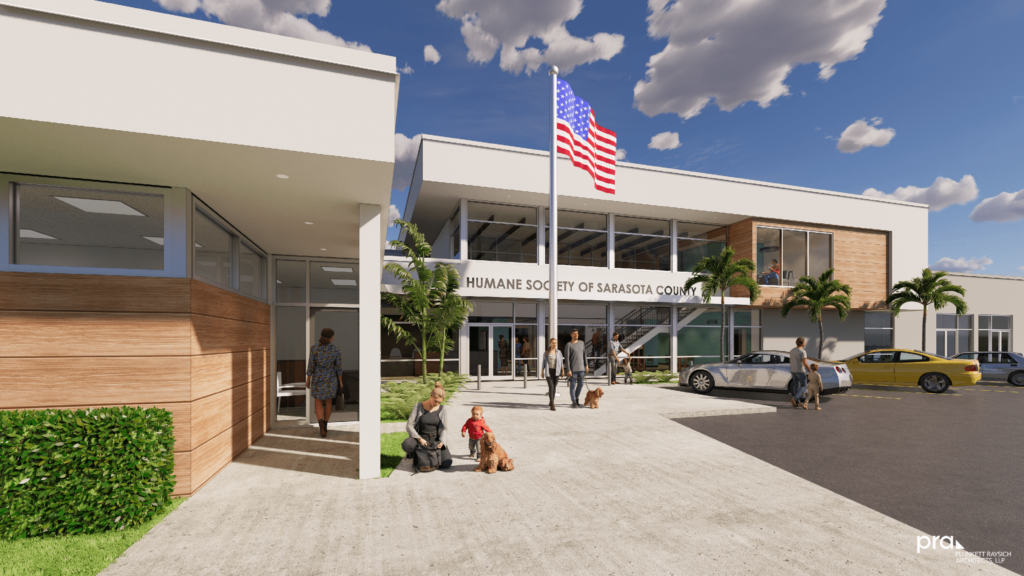
Beyond Room and Board
Small truckloads of transfers arrive regularly from other Florida counties, as well as Louisiana, Georgia, and Texas. HSSC coordinates with partner shelters so that it receives animals with a good chance for adoption. Since Sarasota has so many older residents, many of them living in condos, pooches under 40 pounds match well here.
The process requires much more than a lick and a promise. At intake, animals undergo a full checkup at the on-site clinic. Vets perform sterilizations, remove growths, pull teeth, and treat everything from orthopedic problems to parasites. Gross but true: Medicine can kill deadly heartworms, but a dog’s body has to absorb the decomposing bits, which travel to the lungs and can clog small blood vessels. To avoid fatal complications, dogs must rest, so HSSC has several small pens floored with AstroTurf to allow canine patients outdoor time without the temptation to run and romp.
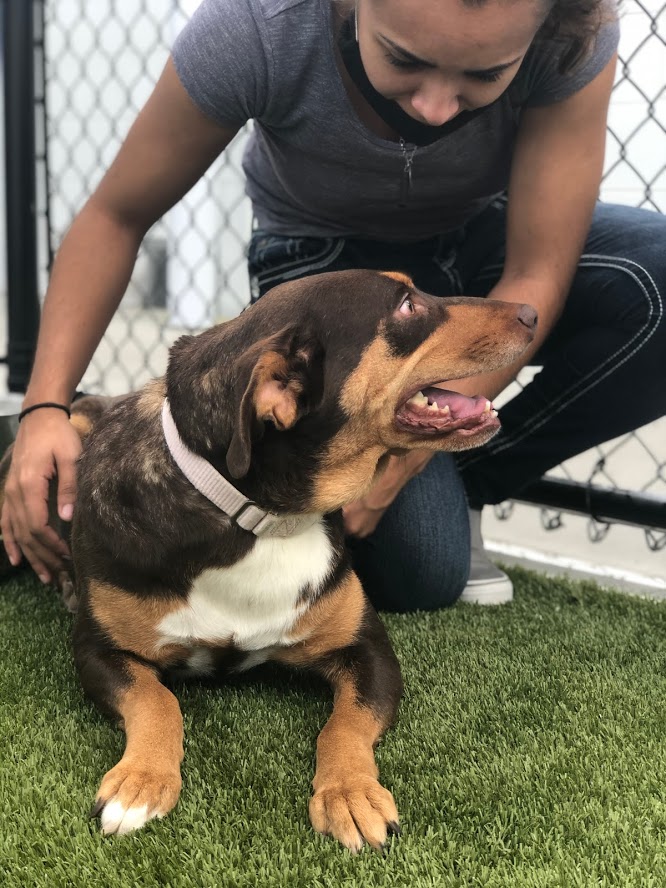
Regular meals and individual daily walks by a volunteer or staff member help to calm canine nerves, and behavior modification plans (or basic obedience training) usually turn bad boys and girls into better-mannered mutts. Large, fenced kennels and an agility yard near the dog pods offer space for animal-person play. Staff behaviorists also “interview” newcomers. How do animals react when someone touches their ears, tails, and paws? Do they enjoy the company of other dogs or cats? Do they respond to commands? What happens when a hand (a fake hand, to start) hovers over their food bowl? Traumatized dogs often exhibit barrier aggression (don’t fence me in) or resource guarding (keep your paws off).
Profiles written by behaviorists with input from volunteers help adoption counselors with matchmaking. One “shy and timid” newcomer, for instance, a winsome black mixed breed, “warms up slowly” with a disposition both “sweet and calm.” Gonce says most pet seekers come in after they spot a cute face on the website, but adoptions are more likely to take if humans understand the reasoning behind labels like “single-dog home” or “experienced dog owners only” or “no kids <10 yrs.”
The more adoptions the shelter completes, the more animals it can save. But everyone wants to avoid failed placements and a revolving door. Some HSSC volunteers foster animals until they’re ready to bond. Foster pet parents may bottle-feed kittens, for example, or offer a quiet living-room spot in the sun to an ill or anxious dog who needs a break from the shelter hubbub.
Once they’re healing and made available, most animals find a home within a month. For needier long-term residents, HSSC sometimes incentivizes adoption. Charlie, for instance, a 75-pound retriever/black lab mix, loves to play—loudly. “A big strong boy,” he’s also “very reactive to other dogs.” So, he qualifies for a “Slumber Party,” a totally subsidized 3-to-30-day home stay, a no-risk trial for a potential adopter. The “TLC Program” encourages prospective pet parents to consider animals, often seniors, with chronic health conditions; the shelter picks up the vet bill for that long-term care.
A Humane Community
Although Gonce started with HSSC just last October, she has deep roots in animal welfare (and three dogs and a semi-feral cat at home). She has worked for the American Humane Association, run a parrot sanctuary, and served as founding president of Spay Neuter International Project. As part of Best Friends Animal Society, she led its program based in Salt Lake City, working to make Utah a no-kill state. About five years ago, she moved to Sarasota to raise her young daughter, parenting and working for Habitat for Humanity Sarasota. “And then the stars aligned,” she said.
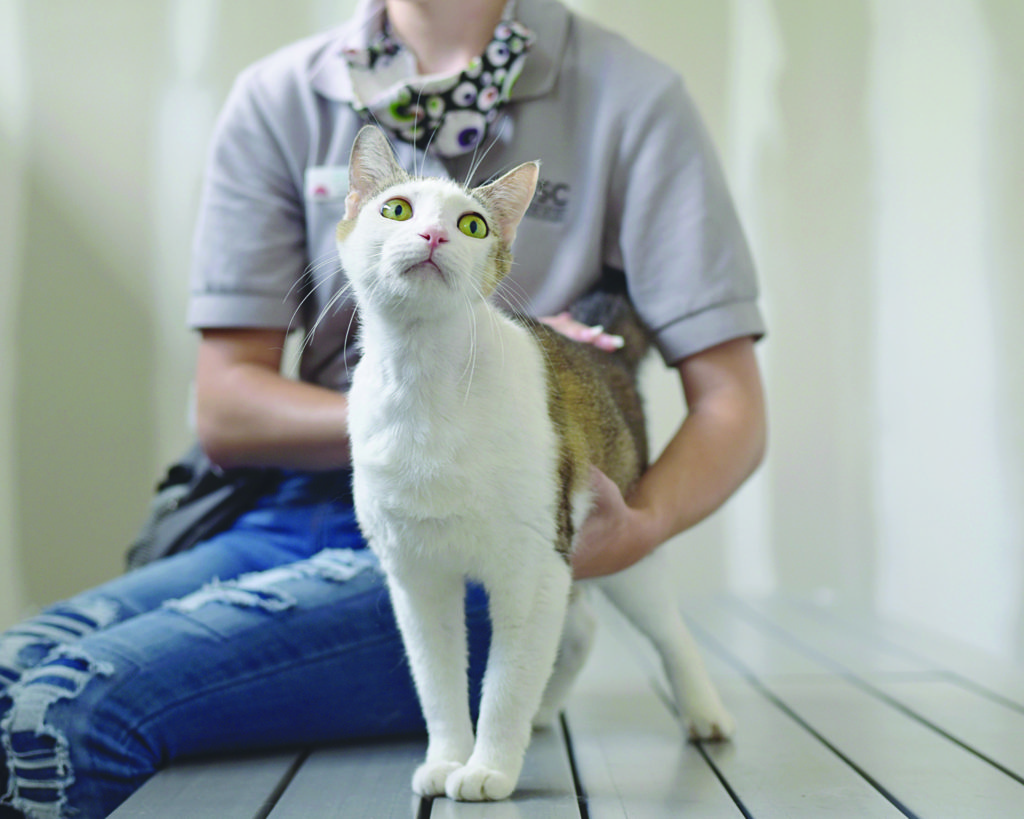
At HSSC, she heads an experienced staff that sees the “purrfect” new campus as the base of a community-wide exchange between people and animals. For pet owners, HSSC offers puppy training and obedience classes (well-behaved dogs are much less likely to end up in shelters), a public veterinary clinic with affordable prices (all proceeds return to the shelter), and end-of-life services. There’s even a memorial courtyard in the new facility.
For children age 6 to 11, HSSC runs “Fur Fun” summer camps. Guest speakers include llamas, pygmy goats, and assorted reptiles, as well as whoever’s in the dog pods or cat rooms. Once those sessions resume in person, campers will enjoy making crafts in the new building’s multipurpose room. The Teen Program will also meet there; it teaches older kids about companion animals and trains them as shelter volunteers, if they wish. Although HSSC has taken its outreach online during the pandemic, everyone agrees that nothing compares to slobbery kisses and roaring purrs in person.
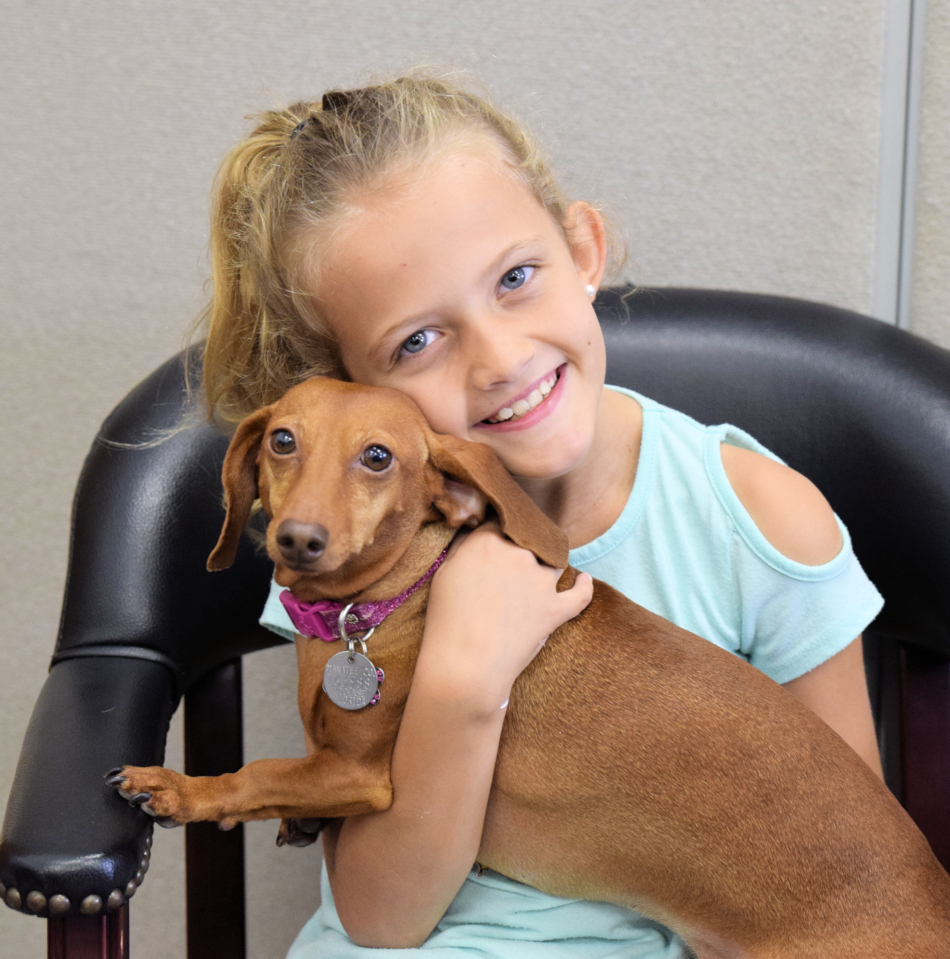
Ginny Armington, director of community outreach, oversees more than 100 pet-therapy volunteers who bring their animals to meet and greets at sites like long-term care facilities and colleges, where students need to “paws and relax.” The shelter also wants to continue its Collars & Scholars Program, a joint effort with The Florida Center for Early Childhood, funded by the Community Foundation of Sarasota County. Over nine weeks in the spring of 2019, fourth and fifth graders selected by the mental-health therapist at Gocio Elementary School participated in lessons with puppets, activities, journals, and lots of hands-on-fur time with shelter animals and therapy dogs. HSSC would like to unleash the program in other Title 1 schools.
Animals have a way of bringing out the best in people. “Empathy and compassion are not inborn traits. They’re learned,” says Armington. “We’re teaching kids what it’s like to be part of a humane community.”
HSSC is planning a grand opening for its new facility in June 2021. Fundraising for construction is ongoing, with major naming opportunities still available. For more information, please email agonce@hssc.org.



You must be logged in to post a comment Login